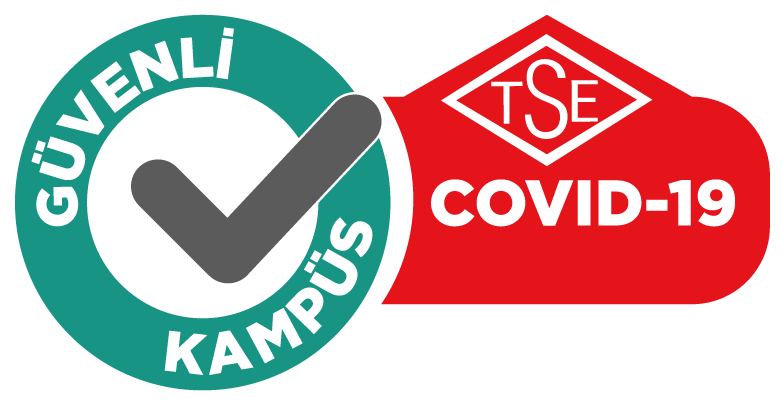ECTS - Political Parties
Political Parties (LAW428) Course Detail
| Course Name | Course Code | Season | Lecture Hours | Application Hours | Lab Hours | Credit | ECTS |
|---|---|---|---|---|---|---|---|
| Political Parties | LAW428 | Area Elective | 2 | 0 | 0 | 2 | 3 |
| Pre-requisite Course(s) |
|---|
| N/A |
| Course Language | Turkish |
|---|---|
| Course Type | Elective Courses |
| Course Level | Bachelor’s Degree (First Cycle) |
| Mode of Delivery | Face To Face |
| Learning and Teaching Strategies | Lecture, Discussion, Question and Answer, Drill and Practice. |
| Course Lecturer(s) |
|
| Course Objectives | The aim of this course is explaining the importance and meaning of political parties for democratic constitutional state. |
| Course Learning Outcomes |
The students who succeeded in this course;
|
| Course Content | The historical development and the function of political parties; internal structure of political parties and the relationship between political parties, political power. |
Weekly Subjects and Releated Preparation Studies
| Week | Subjects | Preparation |
|---|---|---|
| 1 | the origin of modern political parties, right to found political parties. | Maurice Duverger, Siyasi Partiler, 1974. |
| 2 | The claasification of political parties. | Maurice Duverger, Siyasi Partiler, 1974. |
| 3 | One party system, two party system, multiparty system. | Maurice Duverger, Siyasi Partiler, 1974. |
| 4 | Totalitarian parties | Maurice Duverger, Siyasi Partiler, 1974. |
| 5 | Examining the typology of political parties. | Maurice Duverger, Siyasi Partiler, 1974. |
| 6 | Examining the typology of political parties. | Maurice Duverger, Siyasi Partiler, 1974. |
| 7 | Midterm Exam | |
| 8 | The origin of political parties in Turkey. | Fazıl Sağlam, Siyasi Partiler Hukukunun Güncel Sorunları, 1999. |
| 9 | the configuration of political parties in 1924, 1961 and 1982 constitutional systems. | Fazıl Sağlam, Siyasi Partiler Hukukunun Güncel Sorunları, 1999. |
| 10 | Internal structure of political partiesorganisation of parties and parlimentary group. | Fazıl Sağlam, Siyasi Partiler Hukukunun Güncel Sorunları, 1999. |
| 11 | Fazıl Sağlam, Siyasi Partiler Hukukunun Güncel Sorunları, 1999. Hüseyin Özcan – Murat Yanık, Siyasi Partiler Hukuku, 2011. | Fazıl Sağlam, Siyasi Partiler Hukukunun Güncel Sorunları, 1999. Hüseyin Özcan – Murat Yanık, Siyasi Partiler Hukuku, 2011. |
| 12 | Financial status of political parties | Fazıl Sağlam, Siyasi Partiler Hukukunun Güncel Sorunları, 1999. Hüseyin Özcan – Murat Yanık, Siyasi Partiler Hukuku, 2011. |
| 13 | Demokcracy and party restrictions | Fazıl Sağlam, Siyasi Partiler Hukukunun Güncel Sorunları, 1999. Hüseyin Özcan – Murat Yanık, Siyasi Partiler Hukuku, 2011. |
| 14 | Closure case of political parties | Fazıl Sağlam, Siyasi Partiler Hukukunun Güncel Sorunları, 1999. Hüseyin Özcan – Murat Yanık, Siyasi Partiler Hukuku, 2011. |
| 15 | examining the decisions of Supreme Court | Fazıl Sağlam, Siyasi Partiler Hukukunun Güncel Sorunları, 1999. Hüseyin Özcan – Murat Yanık, Siyasi Partiler Hukuku, 2011. |
| 16 | Final Exam |
Sources
| Course Book | 1. Maurice Duverger, Siyasi Partiler, 1974. |
|---|---|
| 2. Fazıl Sağlam, Siyasi Partiler Hukukunun Güncel Sorunları, 1999. | |
| Other Sources | 3. Hüseyin Özcan – Murat Yanık, Siyasi Partiler Hukuku, 2011. |
Evaluation System
| Requirements | Number | Percentage of Grade |
|---|---|---|
| Attendance/Participation | - | - |
| Laboratory | - | - |
| Application | - | - |
| Field Work | - | - |
| Special Course Internship | - | - |
| Quizzes/Studio Critics | - | - |
| Homework Assignments | - | - |
| Presentation | - | - |
| Project | - | - |
| Report | - | - |
| Seminar | - | - |
| Midterms Exams/Midterms Jury | 1 | 40 |
| Final Exam/Final Jury | 1 | 60 |
| Toplam | 2 | 100 |
| Percentage of Semester Work | 40 |
|---|---|
| Percentage of Final Work | 60 |
| Total | 100 |
Course Category
| Core Courses | X |
|---|---|
| Major Area Courses | |
| Supportive Courses | |
| Media and Managment Skills Courses | |
| Transferable Skill Courses |
The Relation Between Course Learning Competencies and Program Qualifications
| # | Program Qualifications / Competencies | Level of Contribution | ||||
|---|---|---|---|---|---|---|
| 1 | 2 | 3 | 4 | 5 | ||
ECTS/Workload Table
| Activities | Number | Duration (Hours) | Total Workload |
|---|---|---|---|
| Course Hours (Including Exam Week: 16 x Total Hours) | 16 | 2 | 32 |
| Laboratory | |||
| Application | |||
| Special Course Internship | |||
| Field Work | |||
| Study Hours Out of Class | 5 | 3 | 15 |
| Presentation/Seminar Prepration | |||
| Project | |||
| Report | |||
| Homework Assignments | |||
| Quizzes/Studio Critics | |||
| Prepration of Midterm Exams/Midterm Jury | 2 | 7 | 14 |
| Prepration of Final Exams/Final Jury | 2 | 7 | 14 |
| Total Workload | 75 | ||

